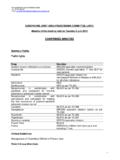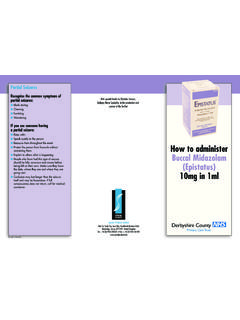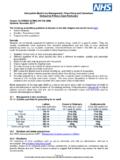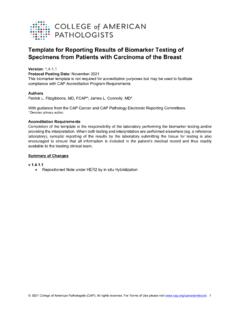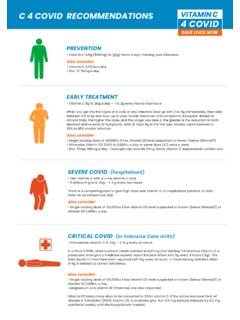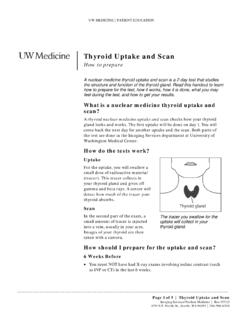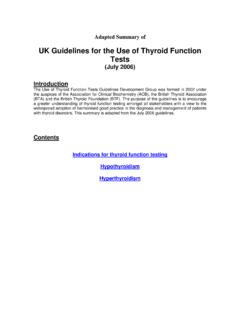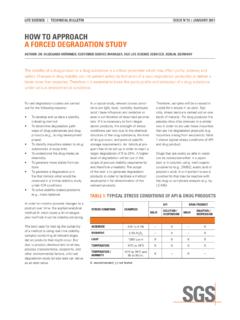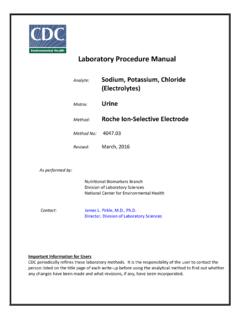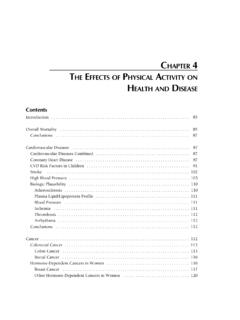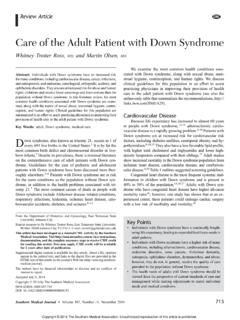Transcription of DERBYSHIRE JOINT AREA PRESCRIBING COMMITTEE (JAPC)
1 Amiodarone monitoring protocol First produced: July 2007 Updated: December 2018 Next review date: November 2020 Page 1 of 12 AMIODARONE MONITORING PROTOCOL Amiodarone is for initiation by the consultant or specialist only. Duration of treatment should be specified. Patients should be reviewed 6 monthly by their GP and monitored carefully for adverse effects of amiodarone therapy, particularly pulmonary toxicity and arrhythmias. U&E, TFT & LFT should also be monitored 6 monthly. Due to the long half-life of amiodarone, clinical problems ( hyperthyroidism, photosensitivity) may occur/ persist for up to a year after stopping the drug.
2 TFT should be monitored for up to 12months after discontinuation. Healthcare professionals should have a low threshold for suspecting amiodarone induced pulmonary toxicity (new/worsened cough or shortness of breath) the patient should be referred to a specialist and carefully investigated. If optic neuropathy/ neuritis is suspected, refer urgently to ophthalmologist and discuss with patient s cardiologist. Amiodarone interacts with many other drugs anyone PRESCRIBING medication for a patient taking amiodarone is responsible for checking for interactions. Due to increased risk of adverse effects over time, it is sensible to ask from time to time whether amiodarone is still indicated and whether the dose can be reduced.
3 See appendix 3. Document update Date of update DERBYSHIRE JOINT AREA PRESCRIBING COMMITTEE (JAPC) Amiodarone monitoring protocol First produced: July 2007 Updated: December 2018 Next review date: November 2020 Page 2 of 12 Abbreviations CONTENTS 1. Introduction .. 3 2. Primary Care responsibilities .. 3 3. Monitoring requirements .. 4 4. Drug interactions .. 6 5. Adverse Effects .. 7 Appendix 1. Amiodarone 6 monthly monitoring checklist .. 8 Appendix 2. Amiodarone patient advice .. 9 Appendix 3. Guidelines for stopping long-term amiodarone treatment 10 Appendix 4. Consultant 12 REFERENCES emc.
4 Amiodarone Hydrochloride 200mg Tablets - Summary of Product Characteristics. 2016 accessed via [2/11/2016][15/6/2017] [6/11/2018] British National Formulary via [6/11/2018]Medicines and Healthcare products Regulatory Agency. Drug Safety Update. 2011;5(5):A1. Medicines and Healthcare products Regulatory Agency. Drug Safety Update Simeprevir with sofosbuvir: risk of severe bradycardia and heart block when taken with amiodarone. 19th Aug 2015 National PRESCRIBING Centre. Primary care management of atrial fibrillation. MeReC Bulletin. 2002;12(5). NHS Clinical Knowledge Summaries. Atrial Fibrillation. Atrial Fibrillation.
5 Accessed via [2/11/2016] Siddoway LA. Amiodarone: guidelines for use and monitoring. American family physician. 2003 Dec 1;68(11):2189 96. Society HR. Practical Rate and Rhythm Management of Atrial Fibrillation. Knight BP, editor. 2010. Spence MM, Polzin JK, Weisberger CL, Martin JP, Rho JP, Willick GH. Evaluation of a pharmacist-managed amiodarone monitoring program. Journal of managed care pharmacy : JMCP. 2011 Sep;17(7):513 22. UKMI. Suggestions for Drug Monitoring in Adults in Primary Care. Accessed via [2/11/2016] [6/11/2018] ALT Alanine transaminase CCF Congestive cardiac failure CXR Chest X-ray DLCO Diffusing capacity of lung for carbon monoxide ECG Electrocardiogram H&E History & examination HRCT High resolution computed tomography INR International normalised ration LFT Liver function tests MHRA Medicines and Healthcare Products Regulatory Agency PFT Pulmonary function tests T3 Liothyronine sodium T4 Levothyroxine sodium TSH Thyroid stimulating hormone TFT Thyroid function tests U&E Urea and electrolytes Amiodarone monitoring protocol First produced: July 2007 Updated.
6 December 2018 Next review date: November 2020 Page 3 of 12 1. INTRODUCTION Amiodarone is a class III antiarrhythmic drug (Vaughn-Williams classification) that reduces the incidence of arrhythmias by increasing the duration and refractory period of the cardiac action potential prolonging the QT interval. It also slows heart rate and cardiac action potential conduction through inhibition of beta receptors and ion channels in a similar manner to antiarrhythmic drugs from classes IA, II and IV. Amiodarone can be used to treat many different types of arrhythmia but serious side effects, including fatal pulmonary toxicity, restrict its use clinically.
7 It is therefore reserved for the treatment of severe rhythm disorder not responding to other therapies or when other treatments cannot be used. Indications may include: Tachyarrhythmias associated with Wolff-Parkinson-White syndrome. Atrial flutter and fibrillation when other drugs cannot be used. (See local guidance for non-valvular AF) Tachyarrhythmias of paroxysmal nature including: supraventricular, nodal and ventricular tachycardias. Ventricular fibrillation; when other drugs cannot be used. Initiation/ dosage Only a cardiologist/specialist should initiate treatment with oral Amiodarone and duration of treatment should be specified.
8 Primary care is responsible for the ongoing monitoring of patients prescribed Amiodarone. Oral loading dose 200mg 3 times daily for 1 week, reduced to 200mg twice daily for a further week; maintenance usually 200mg daily or the minimum required to control the arrhythmia. These guidelines detail the monitoring of Amiodarone in primary care. Use in conjunction with local Management of non-valvular Atrial Fibrillation guidance. 2. PRIMARY CARE RESPONSIBILITIES Confirm indication and duration for PRESCRIBING amiodarone with the patient s cardiologist/ specialist if not already documented in patient s notes.
9 Complete 6 monthly reviews of patients taking amiodarone, enquiring specifically about adverse effects and considering possible interacting drugs (see sections 4&5). Patients should be counselled to report side effects from amiodarone treatment. Check TFT, LFT, U&E, and if applicable digoxin level 6 monthly. See algorithms and for the management of abnormal results . If the patient has symptoms of pulmonary toxicity (new/worsened cough or shortness of breath), perform prompt ECG and CXR to exclude alternative diagnoses. If pulmonary toxicity remains a possibility, refer urgently to the initiating cardiologist/specialist or to a respiratory physician for confirmation of diagnosis and consideration of alternative anti-arrhythmics.
10 Acute admission may be required. Early investigation with HRCT chest scan is important. If the patient reports new onset/worsening visual disturbances perform eye examination, make urgent Ophthalmology referral to exclude optic neuropathy and discuss alternative anti-arrhythmics with initiating cardiologist/specialist. If the patient presents with proarrhythmia, stop amiodarone and arrange urgent specialist appointment. Acute admission may be required. If bradycardia is detected, check for symptoms and arrange an ECG urgently if HR <50 or symptoms are present. If the patient has syncope or second or third degree heart block, Amiodarone monitoring protocol First produced: July 2007 Updated: December 2018 Next review date: November 2020 Page 4 of 12 admission is advised.
